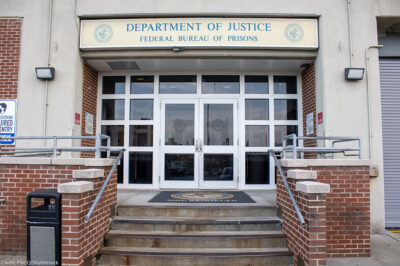SAN FRANCISCO — A state law took effect last year prohibiting harassment against gays in the schools, but few districts in California have taken major steps to implement the law, the San Francisco Chronicle reported.
Some students are therefore taking matters into their own hands, according to the Chronicle.
Jared, who didn’t want his last name used, is trying to get a gay-straight club started at his new school, after endless taunting left him suicidal and prompted him to leave his old school in rural Fresno County.
“I don’t think teachers are really educated about the new law,” he said. That’s why I want to start a gay-straight alliance. Basically, I don’t want to see what happened to me happen to anyone else.”
A spokeswoman for Clovis Unified School District, in Fresno County, said school bulletin boards are posted with policies prohibiting harassment, including anti-gay taunting, and that teachers have gone through training to be aware in the event problems crop up.
But in many instances, students away from urban centers like San Francisco and Los Angeles still don’t realize they have any recourse — that they can file grievances with their school administrator.
The negative experiences of gay students in California were included in a recent study of attitudes toward gays in schools done by Human Rights Watch, located in New York.
The report found that out of 140 youths interviewed, nearly every one described incidents of verbal or other nonphysical harassment in school because of their own or other students’ perceived sexual orientation.
Studies like the one by Human Rights Watch underscore the need for more teacher and student awareness around AB537, said the bill’s author, Senator Sheila Kuehl, D-Santa Monica.
But there is no mechanism for the state to assess how districts are doing. So, Kuehl noted, many students are taking their own initiative.
A group at Los Angeles Unified plans to set up a Web site explaining a student’s recourse under the law in September. The Gay-Straight Alliance Network, located in San Francisco, already has information online.
“The moment I exhaled was when (the bill) was signed,” Kuehl said. “It’s pretty inexorable. Even if districts are slow to respond, it’s the law. It’s going to involve students, teachers and administrators participating in training and awareness campaigns.”
The delay at the district level results in part from the lack of direction from the state. The reason: the typical bureaucratic slowness in executing a new law.
In April, a task force assembled by State Superintendent of Public Instruction Delaine Eastin made 12 recommendations for implementing the law. A representative of the state Safe Schools and Violence Prevention Office said Eastin is still considering which of the recommendations she will forward on to the districts.
In some cases, local governments have taken the lead. The Santa Clara County supervisors approved hiring a full-time coordinator to help train teachers and staff about the law in all 53 of the county’s high schools.
With urging from students, the East Bay district of West Contra Costa is in the process of implementing an anti-harassment policy and sensitivity training in response to the law.
“AB537 did a tremendous amount to clarify the point that anti-gay harassment can’t be tolerated in schools,” said Robert Kim, staff attorney for the American Civil Liberties Union of Northern California, which is suing two school districts on behalf of two California students who claim they were habitually targeted by anti-gay epithets.
Bailey Nichols, 16, an El Cerrito High sophomore, said even with the new law she frequently hears comments like “that’s so gay,” “queer” and “lesbo” at school.
“I don’t think AB537 has made a difference yet, but it’s a step in a positive direction,” said Nichols, who is president of her school’s Gay-Straight Alliance. “At least now we have a legal basis for our arguments (against harassment).”
In San Ramon, parents and other residents have expressed outrage that the school would consider teaching gay tolerance in response to a gay teacher being targeted by a hateful, student-made off-campus Web site.
Terry Koehne, spokesman for San Ramon Valley Unified School District, said the district has taken steps to educate students and teachers to ensure that every student and staff member feels comfortable at school.
“We’re about safe schools,” Koehne said. “Under AB537 we have not only an ethical obligation to prohibit harassment, but a legal obligation.”
Nationally, the ACLU’s Lesbian and Gay Rights Project is spearheading efforts to help schools address homophobia before it escalates. Through its Safe Schools campaign, they are providing the tools and assistance for communities to make educational environments safe and supportive for every student in every school.
Stay Informed
Every month, you'll receive regular roundups of the most important civil rights and civil liberties developments. Remember: a well-informed citizenry is the best defense against tyranny.


